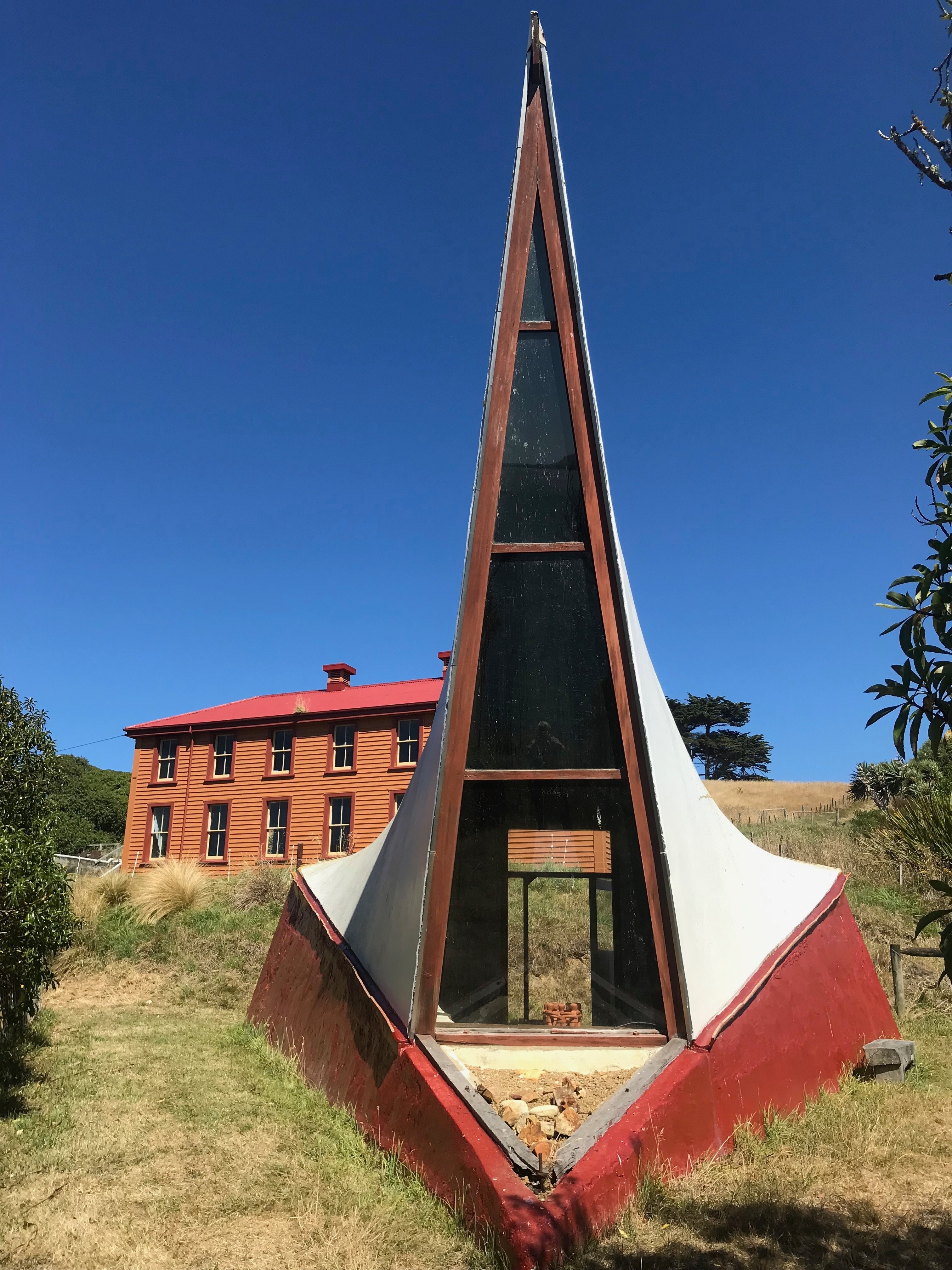Since the Community took over the lease of Quarantine Island in 1958, initially as the St Martin Island Community, a huge amount of work has gone into making the island accessible and habitable! Early community members describe:
“The climb from the jetty was difficult and overgrown”
“… a deep layer of solidified goat dropping had to be dug out of the milking shed.”
“… the main house (the enlarged Keeper’s Cottage) …the only building still in fair condition.”
A number of works have been undertaken, the jetty has been extended, the Community built the Chapel, the Lodge has been added to, composting toilets have been installed and a very valuable and essential rainwater collection and storage system has been extended.
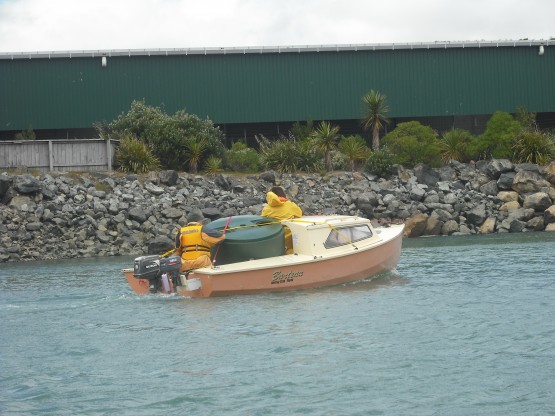
The WW1 soldiers’ recreation rooms have been added to and transformed into the current Resident Keepers Cottage. Extensive fencing has been erected to protect the regenerating native bush and provide a space for farm animals. Huge amounts of volunteer work have gone into creating the beautiful, interesting and refreshing sanctuary that Quarantine Island Kamau Taurua is to so many people.
Saving the ‘Married Quarters,’ New Zealand’s only two-storied wooden quarantine building, which remains on its original site. This is the last remaining building of the 1870′s quarantine station, a prominent two-storied building that once housed families in quarantine.
The building had become very dilapidated, when a massive effort was put in to save and restore it, led by former keeper, Kathy Morrison. The building is now weatherproof and structurally sound. In fact, we are delighted to have won an award in 2019 for our collective work to save and preserve this special building!
We gratefully acknowledge major financial contributions to the Married Quarters project from Lotteries Environment and Heritage, the Otago Community Trust, Perpetual Trustees Charitable Trust, Dunedin Heritage Fund, Alexander Mc Millan Trust, and Sargood Trust and the many others giving generously in both cash and kind. Our former and current Keepers, especially Kathy Morrison, but also Graeme Furness, Francine Vella, Don Hunter, Phil Perrow and Dries van den Broeck; the Department of Conservation; Heritage NZ; Phil Ballard (Fire Engineer); Graeme Innes (electrician); Chubb; Thankyou Charitable Trust; Otago Peninsula Community Board; Chalmers Community Board; West Harbour Lions; Dunedin Casino; Tracey (T.C.) Elliott; Zena Bracey; Kristen Bracey & Chris Brown; Port Otago; Southern Clams; John McLachlan; Resenes; Bramwells; South Bar; and the Dunedin Zen group.
Our builder/painter/project manager since 2015, Paul Clements, has been so resourceful and generous, enabling us to complete this ambitious project. Finally, we would like to thank the many volunteers who cheerfully helped at working bees, and our special Heritage Open Days, and who have made the whole daunting undertaking, do-able and enjoyable! Hard Work Restoring History of Quarantine
Thanks to Alexander McMillan Trust and Otago Community Trust for funds to repaint the exterior in March- April 2019, and Paul Clements and Moana House for doing this work.
To find out more about what was found during the archaeological monitoring of the excavation, read Shar Briden’s report.
Access to the Buildings from the Jetty
When the Community first arrived on the island they had to scramble their way through the bush up a steep hill to the historic buildings. In the early years, the Community cleared a path from the jetty up the side of the hill to the ‘Lodge’ (old Keepers cottage from quarantine days).
This track still exists and is the most used access way. It does get very muddy in the winter and is very vulnerable to slipping being steep with patchy ground cover.
It was decided that another access was needed making the route to the historic buildings a little easier. Steps were cut and built from the jetty up to the current Keeper’s Cottage (originally the WW1 soldiers recreation rooms). Thanks to the Bendigo Valley Sports and Charity Foundation, Dunedin Amenities Society and the Bracey-Brown family for generous financial help with this.
Major repairs were done to the jetty by Port Otago in 2019 which enabled QIKTC to meet the Otago Regional Council’s WOF requirements. Access ladders were donated by John McLachlan and Port Otago.
Water Storage
We are dependent on catching and storing rainwater on the island. Until recently we were reliant on storing all our water in the original concrete tanks, which have cracks and leaks. With increasing long dry periods, which will become more common due to climate change, we have tried to increase water storage.
In 2010, The Sargood Bequest donated funds for a 30,000 litre tank, which was transported to the Island by helicopter, thanks to a grant from the Bendigo Valley Sport & Charitable Foundation. Volunteers carried over all the gravel and built the pad. Thanks particularly to Chris Brown for doing this work.
Thanks to the Speights Fund in 2018 we were able to purchase a new 3,500 litre tank, pipes and fittings, to further reduce dependence on the aging concrete tanks. A new UV water treatment system was installed, with the help of a DCC Services Grant in 2017. In 2019, Jess Penwarden ran a givealittle campaign to raise funds for another tank. The Otago Community Trust (OCT) donated funds for the balance and in mid-2021 a new 25,000 litre tank will add significant new storage. Volunteer Graham Innes spent many hours upgrading a second-hand pump, purchased through the OCT grant, so that we can pump water around the system to maximise water capture and storage.
Lodge and Cottage Maintenance
For many years, the Keeper’s cottage had no fireplace, hot running water, nor washing machine, and the toilet was a long-drop adjacent to the cottage. Kathy Morrison, the Island’s Keeper for 12 years, and her partner Douglas Black and teenage daughter, Bryony, did it tough! A wood burner was installed just as Kathy left, and it was Graeme Furness, the subsequent Keeper who got to enjoy this. A small composting toilet was installed during Graeme’s time and a hot water cylinder for the cottage. Graeme installed a sink to the back bedroom and made this space available to QIKTC members for casual use. The addition of a washing machine during Francine Vella’s time as Keeper meant dirty washing no longer needed to be taken off the island!
When Anna Hughes and Wayne Johnson moved on to the Island with their two young boys, Eli and Niwha, in 2013, the Community Council tried hard to fundraise in order to make the cottage warmer. Underfloor insulation was installed, the rotting southern wall was repaired, and a rotten window replaced. A big thank you to Peter Matheson, Kristen Bracey and Chris Brown for generous donations to enable this. Good curtains for the lounge and dining room were bought from the Dunedin Curtain Bank.
Subsequent Keepers and the Council chipped away at small improvements and maintenance. Dries van den Broeck built new shelves in the kitchen, experimented with a urine separator in the composting toilet, and freshened up the paint in the lounge. Paul Clements was employed to replace some of the rotten windows and weatherboards, with Dries’ capable assistance, and volunteers helped with painting the exterior and improving the spouting.
A lot of work has also taken place to improve the Lodge over the years. As funds and energy allow, we continue to work on this.
Composting toilets, which have a batch system, were installed in the 1990s.
Graeme Furness made the beautiful benches in the Lodge kitchen. Builder Matt King built the ‘boot room’, installing the large window which gives us a wonderful view towards Portobello and of the Little Shags which nest in the macrocarpas below. Prior to Matt’s work to create this room, this area was not enclosed, and dark and grotty. Matt was wonderful at including and upskilling volunteers to ‘help’ him, including the teenagers. Chris Brown and Kristen Bracey donated funds for wool insulation above the lounge and dining room, and the Council supplemented this with batts. Thanks to Chris Brown also for jibbing the bunkroom and patching gaps in the ceiling and floors. The discovery of some old newspaper lining on the bunkroom wall revealed interesting news from 1898, which has been protected. You’ll have to visit to find out the good news!
In December 2016, a Panasonic heatpump was installed in the Lodge Dining Room, thanks to a generous $3000 grant from Foodstuffs/Gardens New World, and a $600 discount from Panasonic.
In 2017- 2018 volunteer electricians Roman Solomatenko and Graham Innes donated more than 100 hours to replace and upgrade most of the electrical system in the Lodge and make some improvements in the cottage. Thanks to a DCC Services Grant in 2017 for covering materials.
Thanks also to this fund for enabling us to purchase a UV water filter so we can treat the drinking water.
Donations from the Sargood Bequest and QIKTC funds enabled us to replace most of the mattresses with wipeable PVC covered ones. A grant from the Otago Community Trust, QIKTC funds and local plumber Richard Gees‘ donation of his skills, meant we were able to replace the aged water cylinder in 2021. The Otago Peninsula Community Board and OCT co-funded new smoke alarms.
Keeper, Dries van den Broek replaced rotten weatherboards and enclosed the south wall of the Lodge in 2020, to make the lounge warmer. Paul Clements was employed again to remove rotten wall framing and weatherboards.
Of course, many volunteers have also helped preparing and painting the roof, the exterior and interior walls, ceilings; scrubbed and varnished the wooden floor in the toilets; and spent time repairing things. We know that volunteers have jobs like this to do in their own homes so we are very appreciative of them giving up their time to help with these things on the island!
Seats and picnic tables
Thanks to donations, notably from Lyndall Hancock, Zena Bracey, the Dunedin Amenities, and Grant Bracey-Brown, there are picnic tables and seating around the buildings, and in special spots throughout the reserve. They are there to encourage visitors to pause, to enjoy the wonderful, ever-changing views, to sit and chat or take time for themselves. One of the seats is particularly special, ‘Lyndall’s Lookout’, just below the ridge overlooking the cemetery and with views in all directions. This was designed by Community members, built by Paul Clements with assistance from Keeper Meghan Hughes, in honour of our oldest active volunteer/member, Lyndall Hancock, who joined the Community in about 1960, and in 2021 turned 91.
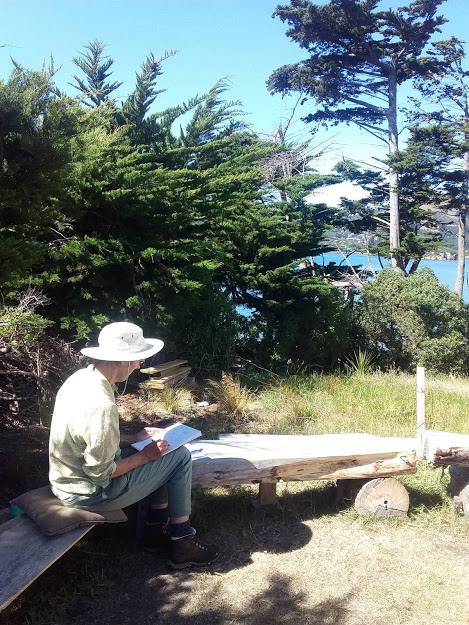
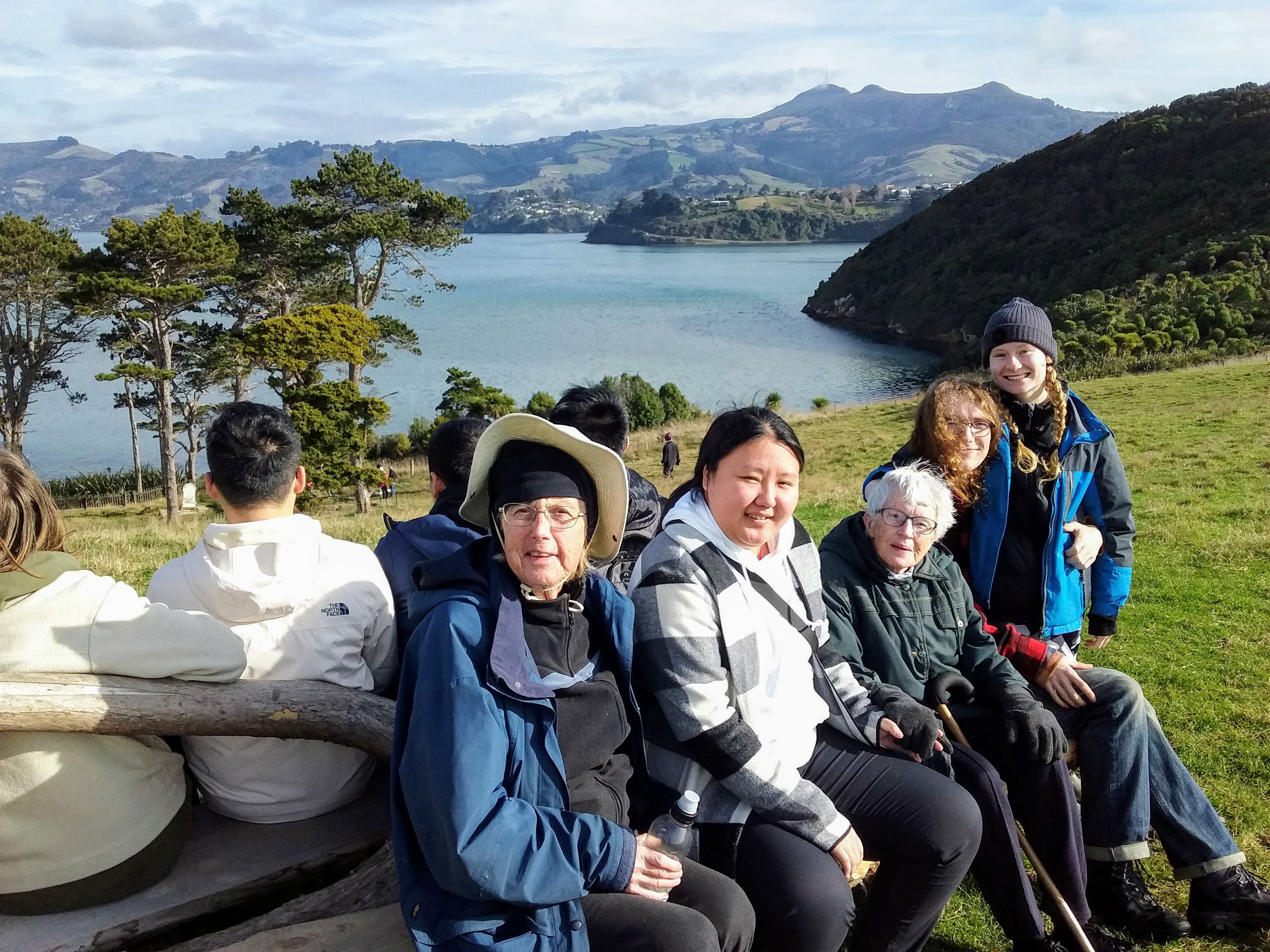
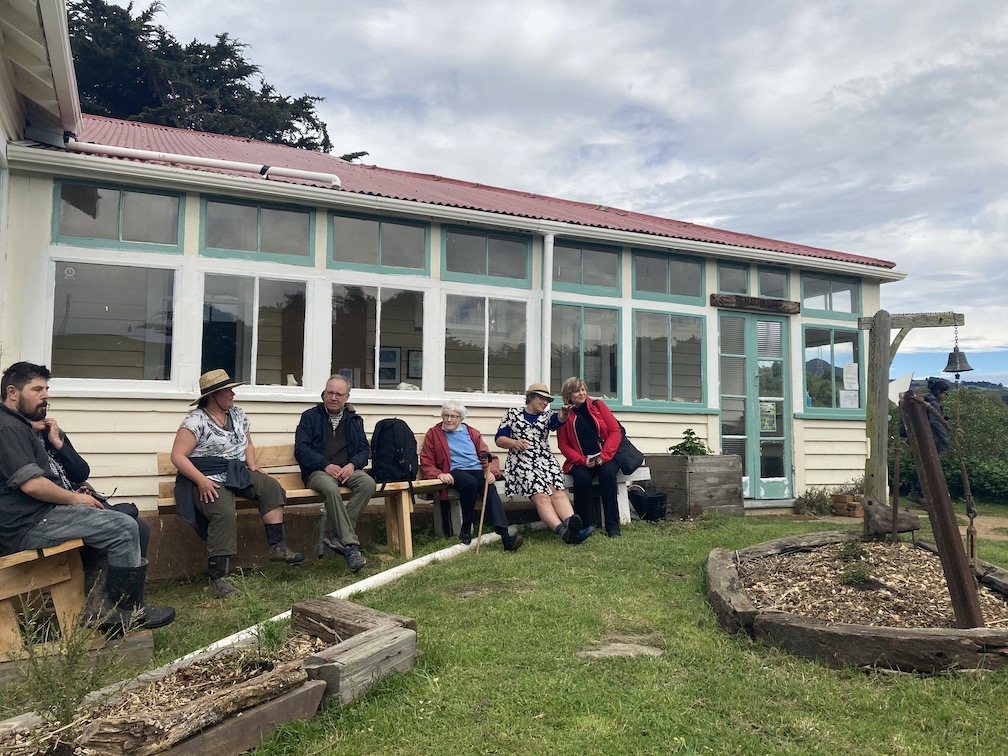
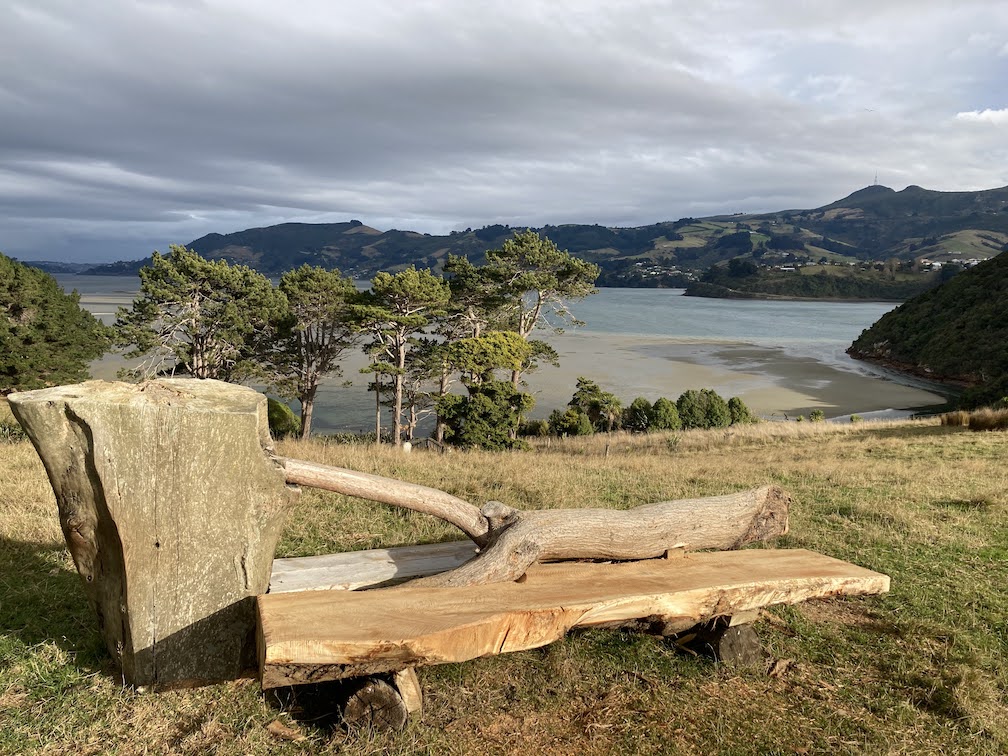
Survey of the Island and Cemetery
In August 2016, Dr Pascal Sirguey and Craig McDonnell from the University of Otago School of Surveying conducted a survey of the Island using a combination of photos captured by a Remotely Piloted Aircraft System (RPAS, a.k.a., drone or UAV) and ground survey.
This gives us up to date topographical data and aerial imagery of the island at unprecedented resolution and will add to the understanding of the ecology and heritage features on the Island. A further ground survey of the cemetery took place in early 2017.

